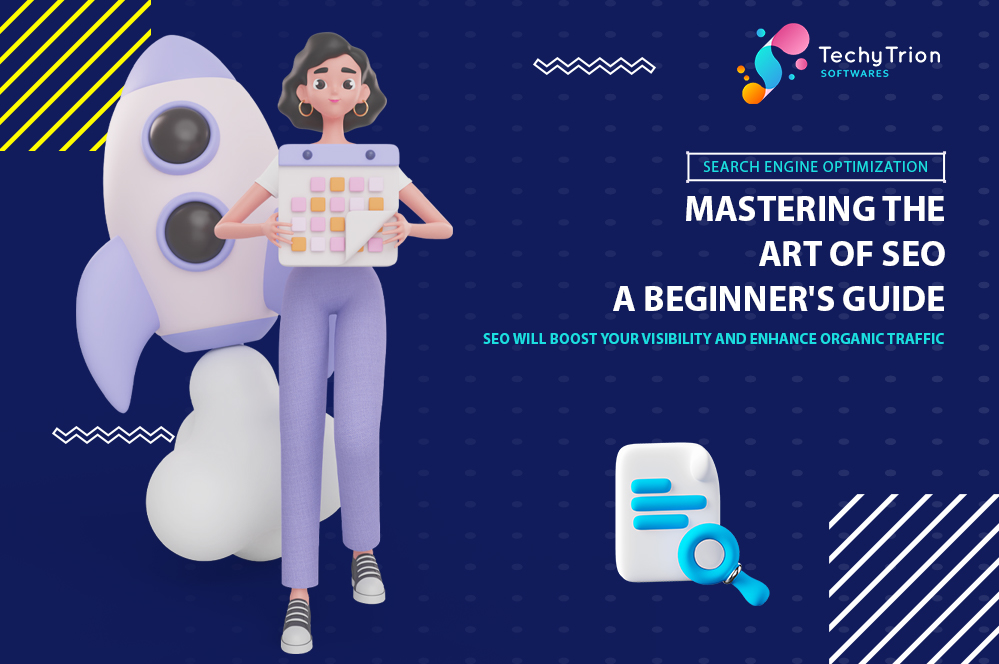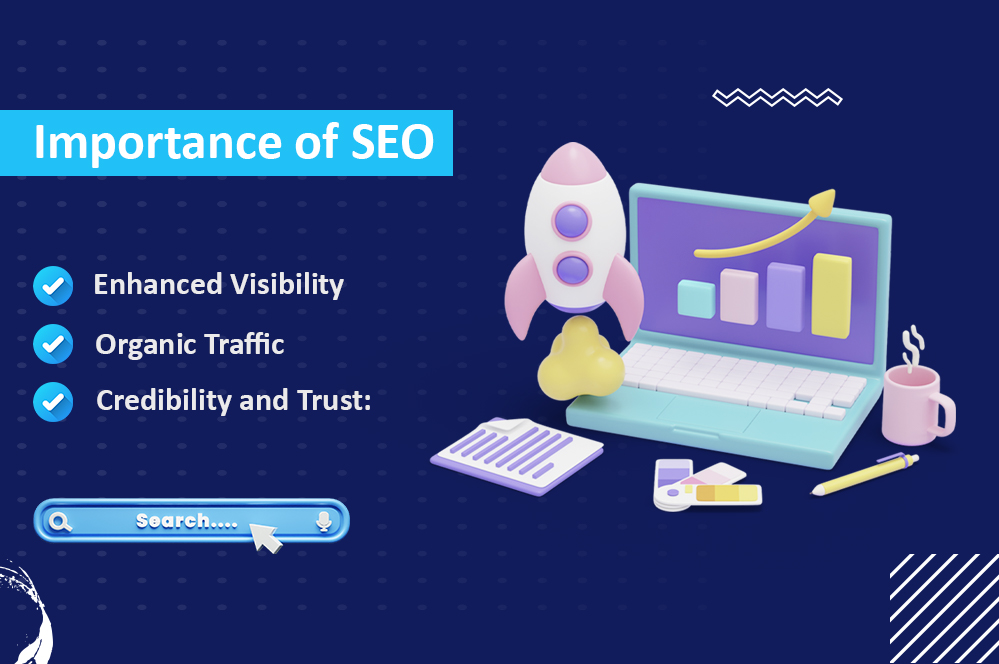
Mastering the Art of SEO: A Beginner’s Guide
SEO, or search engine optimization, is one of the most modernly consequential digital marketing strategies recognized today. Given the competition among millions of websites for recognition, SEO will boost your visibility and enhance organic traffic into achieving goals. Here, a thorough beginner’s guide is explained to furnish you with information on how to kick off effective SEO.
What is SEO?
SEO stands for search engine optimization; a practice that optimizes a website in order to achieve a given ranking on search engine results pages of a search engine, such as Google, Bing, or Yahoo. By creating your content around keywords, that content is optimized for general search engines, allowing browsers to see the website easily.
Importance of SEO :

Enhanced Visibility : Being ranked higher in SERPs means improved visibility for your brand or your business.
Organic Traffic : Organic traffic includes the visitors who discover your website by entering relevant keywords in search engines. Organic traffic refers to those who have come to your website of their own free will, without being deceived or attracted by other ads or promotions.
Credibility and Trust : Search engines offer much more trust to the views they provide than any other platform that provides information. Higher rankings add to the confidence that a user will show in your website.
Why SEO is Important : SEO is less cost-intensive than other digital marketing avenues, giving a cost-effective alternative with a measurable return on investment.
Major tendencies of SEO :

1. Keyword research : Keywords are the backbone of SEO. It’s what users are searching for in search engines. Tools like Google Keyword Planner, SEMrush, or Ahrefs will enable you to find the best recommendations and the most often searched keywords with low competition in a given niche.
2. On-page SEO : On-page SEO tweaks a web page or an internet site in order to increase its ranking. These include among others:
Title Tags : use creative titles that contain the keywords you are trying to rank for.
Meta Descriptions : a short engaging summary description of a page.
Header Tags : structure your content with H1, H2, H3, etc.
Quality of Content : target information, originality, and usefulness.
Image Optimization : use appropriate and descriptive filenames and alt text.
3. Off-page SEO : Off-page SEO refers to those activities undertaken outside each individual website that can affect ranking.
These activities include :
Backlinks : Gain a link from a high authority website.
Social Media Marketing : posting content such that it gets shared on various sites.
Guest Blogging : writing for authority sites in a niche.
4. Technical SEO : Technical SEO involves improvements made to the way a site can perform as a whole with respect to user experience aspects.
Important factors include:
Having a Mobile-Friendly Site. It is important for sites to have a design that is adaptable to mobile devices.
Site Speed : Slow-paced sites tend to have users bouncing off and interacting less with the site thus decreasing traffic.
Locked Websites : The SSL certificate may provide users with an automatically safe browsing session through HTTPS.
Crawlability : Essentially, a direct means through which search engines can index the site.
5. Local SEO : Local SEO will ensure that businesses that serve clients are in a geographical area with an audience that is super convenient for them.
Techniques to be used include:
Google My Business : State all the relevant information your business has to present in its GMB correctly.
Local keywords : Target keywords that are local.
Customer reviews : Encourage satisfied customers to leave reviews.
SEO Best Practices :

Learn valuable SEO : Pay attention to what your audience needs and possible solutions to their problems.
Use analytic tools : These will assist you in tracking performance, such as Google Analytics and Search Console.
Stay updated : Since SEO is dynamic, be it your duty to stay informed on current trends and algorithm changes.
Don’t use black hat method : Such things like buying links, keyword stuffing, etc. will get you a penalty.
Common SEO mistakes to avoid :
Mobile optimization ignored.
Meta tags and descriptions now paid attention to.
Duplicate or low-quality content.
You did not create quality backlinks.
Ignoring user experience.
Conclusion :
SEO is not a one time affair but a continuous process that travels alongside technological advancement and user behavior. By knowing a thing or two about best practices and principles of SEO, you will be directed toward increased views to your website, traffic to your pages, and a digitized mark in the whole process. Start small, be consistent, and you will eventually get results in either direction down the road.





 Book call
Book call



